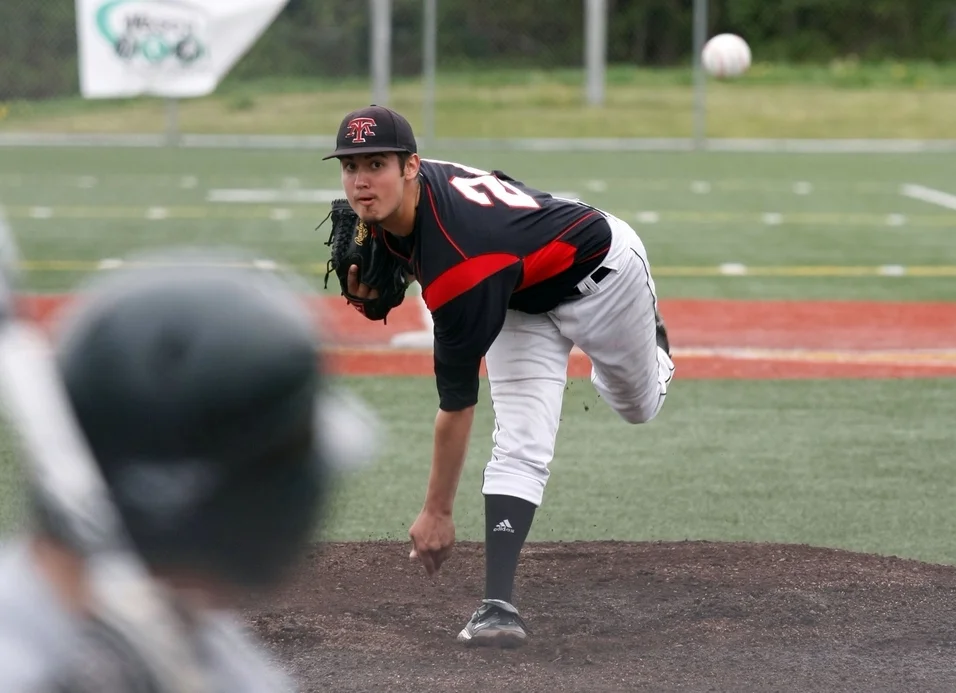When asked to describe Greg Maddux, the retired 4-time Cy Young award-winning pitcher, Wade Boggs, a Hall of Fame hitter with a .328 lifetime batting average, once said, “It seems like he's inside your mind with you. When he knows you're not going to swing, he throws a straight one. He sees into the future. It's like he has a crystal ball hidden inside his glove.”
So, what did Maddux know that other pitchers don’t? Neuro-engineers from Columbia University decided to actually look inside some hitters' brains to try to find out.
Maddux, who seems to be a lock for the 2014 Hall of Fame class, earned a reputation for knowing batters so well that he could think one step ahead of them. "When you think it's a ball, it's a strike,” confessed former Yankees manager Joe Torre. “When you swing at what you think is a strike, it's in the dirt. He was a remarkable pitcher." This lack of pitch recognition skill by hitters is what all good pitchers try to exploit. While hours of batting practice try to teach this through repetition, there have been surprisingly few attempts at finding out what’s really happening under the batting helmet.
Jason Sherwin, Jordan Muraskin and Paul Sajda, biomedical engineers at Columbia’s
Laboratory for Intelligent Imaging and Neural Computing, specialize in motion perception and high speed decision making but are also baseball fans. Last year, they reported that they had been able to pinpoint the timing of pitch recognition within the brain. Fitted with electroencephalography (EEG) skull caps, test volunteers watched 12 sets of 50 different video pitches that were either a fastball, a curve or a slider. They were asked to immediately identify the pitch they just saw, before the pitch arrived over the plate, by pressing a certain computer key.
Comparing correct answers with the EEG data, the researchers were able to determine the exact millisecond when recognition happened in the brain, or when the hitter locks onto a pitch knowing what’s on the way. Fastballs were the fastest to be recognized with curve balls taking the longest. However, sliders had the highest average prediction accuracy at 91% while fastballs were only guessed correctly 72% of the time.
Mapping the response times with the trajectory of the ball, the recognition typically happened in the middle third, between 32 and 40 feet, of the ball’s path to the plate.
After discovering when pitch recognition happens in the brain, the team then wanted to see where it occurred. By combining the timing clues from EEG with the location-specific data of functional magnetic resonance imaging (fMRI), they could see a more complete model of decision making. This time they used college baseball players and showed them a combination of 468 fastballs, curves and sliders, while wearing EEG caps and lying inside an fMRI machine.
 |
| Figure 1 |
Cross-referencing the pitch’s trajectory, the “light bulb” recognition moment and the fMRI map of the player’s brain, they not only confirmed their earlier research of a pitch-guessing neural network but also a fascinating twist. For correct guesses, the brain logically lit up in its visual and motor cortex areas.
However, for the incorrect guesses, activity moved to the prefrontal cortex of the brain, known to be used for conflict resolution and higher level decision making. As can be seen in Figure 1, red areas indicate regions that have higher activations during correct pitch guesses, while blue areas indicate regions with higher activations for incorrect choices.
So, when the visual information isn’t enough for an automatic recognition, it appears that the problem gets escalated to add in other known facts or previous experiences.
So, what good would this baseball neuroscience be against today’s great pitchers? The authors ask us to imagine a new era of baseball training, where step one is to capture a baseline of each player’s neural recognition ability. Realizing when a hitter is able to make a correct prediction of a pitch and seeing first-hand their brain’s reaction time will identify specific training opportunities. Step two is to use a pitch simulation tool to see hundreds of pitches, measuring performance improvement in accuracy and speed.
“Knowing the neural circuits involved in the rapid decision-making that occurs in baseball opens up the possibility for players to train themselves using their own neural signatures,” concluded Sajda.
Tony Gwynn, another Hall of Famer known for studying video of opposing pitchers, would have appreciated this technology twenty years ago when facing Maddux. “He’s like a meticulous surgeon out there...he puts the ball where he wants to," remembered Gwynn. "You see a pitch inside and wonder, 'Is it the fastball or the cutter?' That's where he's got you.”














